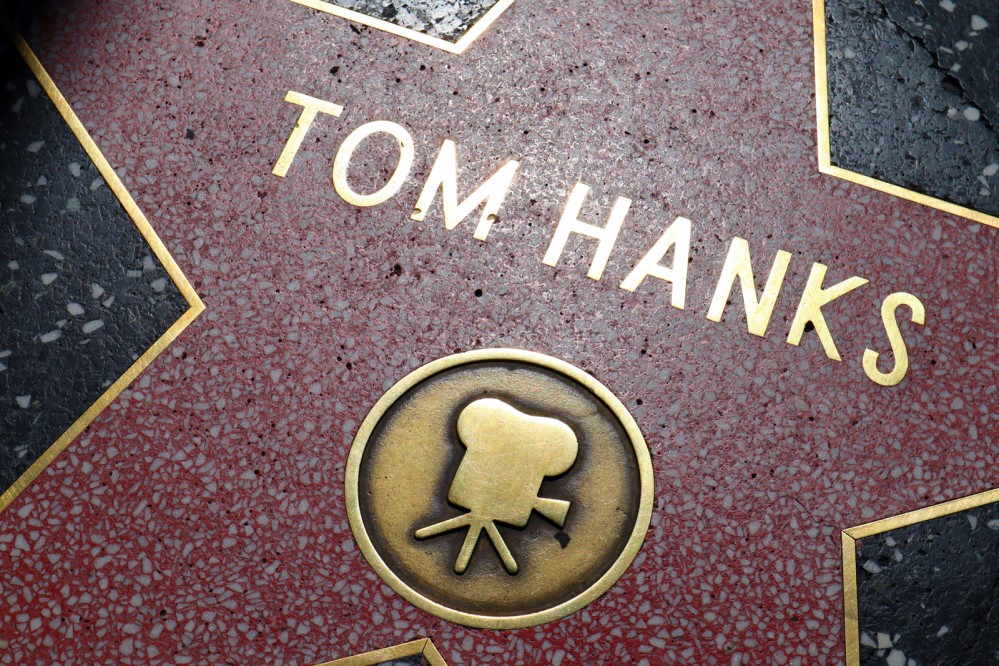
At the beginning of 2020, naïve to all that would happen in the coming weeks, I found myself watching Tom Hanks accept the Cecil B. DeMille award on the televised Golden Globes. Struck by the many lessons he packed into those few minutes, I shared the video of his speech at work, and our group put together a list of “10 Inspirations from Tom Hanks for 2020” through a local government lens.
That year may not have gone as planned, but as we all look to the future—and for me personally, as our organization embarks on major values, culture, and strategic planning efforts in the wake of the world being turned upside down—these reminders still feel just as relevant today:
1. Appreciate your family.
While Tom was clearly talking about his actual family in the context of his speech, I can’t help but wonder how differently we might approach planning for the future if we “saw” our coworkers and community members the same way their families “see” them. How much bolder would we be in advocating for changes, such as those that would allow them to spend more quality time with their families outside of work? How much more urgently would we make investments in new services and programs to make their lives better in big and small ways?
2. Head full of ideas? Share ‘em!
How do we inspire a head full of audacious ideas? We can look to unexpected places for inspiration, from art to articles about industries completely unrelated to local government. We can do the (often hard and painstaking) work of developing a culture where everyone at every level feels empowered and safe to share their ideas. Most importantly, we can say “yes” to new and different ideas and be visible in our celebration of those very ideas, regardless of whether they succeed or fail.
3. Learn from others.
The good news is that we aren’t facing the future alone. Whether you’re feeling stuck, you’re looking for new ideas, or you could just use some advice, consider attending the ICMA Annual Conference or visiting one-on-one with a trusted colleague. We can always learn from each other, and I’ve never met anyone who isn’t willing to share more about their organization’s innovative programs and services. Of course, partnering with private sector professionals—such as futurists, strategic planning facilitators, or even business leaders in your own community—can also prove to be incredibly inspirational for thinking about the future in new ways.
4. We don’t have a film unless you do your job.
I love serving in the assistant/deputy city manager role, but it’s also one of the weirdest roles I’ve ever had, especially in the context of strategic planning. It’s easy to wonder what is “mine to own” in this process. After all, the big-picture vision belongs to the community, the strategic priorities to the city council, the organizational vision to the city manager, and departmental visions to directors. Where do assistants and deputies fit in? We can write an organizational vision with the city manager; we can ask big-picture questions to help directors as they outline departmental strategies; and we can bring our own unique passions and strengths to the job as we work to inspire a future better than people can even imagine.
5. Everyone has a place—and is as important as the one standing in front of the camera.
As leaders, we get to be the face of a lot of things within the organization, but are we doing enough to think about the future from the perspectives of others? Our organizational visions and strategies will be meaningless if they don’t resonate with employees at all levels in a way that inspires them to be advocates and ambassadors themselves.
6. Be on time. Maybe even arrive early.
While today may seem “fine,” we know decline is inevitable if we are not constantly taking aspirational actions. This can be anything from preparing financial plans for funding street rehabilitation, to spending time talking about the future with new employees, to not shying away from hard conversations with the community about changes that are needed. We might even need to question whether or not lengthy planning efforts resulting in detailed, multi-year action plans are still the best way to “arrive early” and keep us on the aspirational path in an increasingly disruptive world.
7. Know your lines—and the context of your lines in the film.
As leaders, we all know how important every single employee within our organization is to our future success and achieving the community’s vision, but do they? If we want employees to find fulfillment in their jobs, it is critical that we put even more effort into sharing that vision and connecting the importance and relationship of their day-to-day work to our big-picture strategies and initiatives.
8. Know that we’re all going together.
When we look to the future, it can be easy to assume that we have talked enough about the “why” behind our initiatives, which risks jumping straight to focusing way too much on a list of projects instead of a vision. When we do this, it can cause frustration and confusion as people do not fully understand where we are trying to go.
9. Don’t be “hungover.”
We shouldn’t let the past rule the future. For those of us who have worked for an organization for a long time, this is often easier said than done. While we may remember a prior council emphatically giving clear direction on a topic, we need to be willing to test changes to these policies with new governing bodies today. After all, we have to be careful that the things that made our communities successful 10 years ago don’t become the very things that hamper success in the future.
10. Check the gate!
Tom explained that back when motion pictures were shot on film, you could not move on to the next scene until the “gate was good.” (The gate is the window on the camera where light from the lens passes through to expose the film. After a scene, they would “check the gate” to confirm that all was well and the production crew could move on to the next take.) For me, one of the hardest parts about looking to the future is that it will be decades until we know whether or not the “gate was good”—and it will be the community, not us, making that assessment. Even though this can be hard, what an incredible privilege it is to get to work in a profession where we have the opportunity to contribute to making our communities better not just today, but for years and years to come, long after we are gone.
Here’s to looking to the future, giving it our all, and to residents 50 years from now saying the same words with which Tom Hanks ended his speech: “I have checked the gate. The gate is good.” (And if anyone knows Tom Hanks, please thank him for his unexpected impact on local government.)

JENNIFER MAY is deputy city manager of Sugar Land, Texas.
New, Reduced Membership Dues
A new, reduced dues rate is available for CAOs/ACAOs, along with additional discounts for those in smaller communities, has been implemented. Learn more and be sure to join or renew today!
